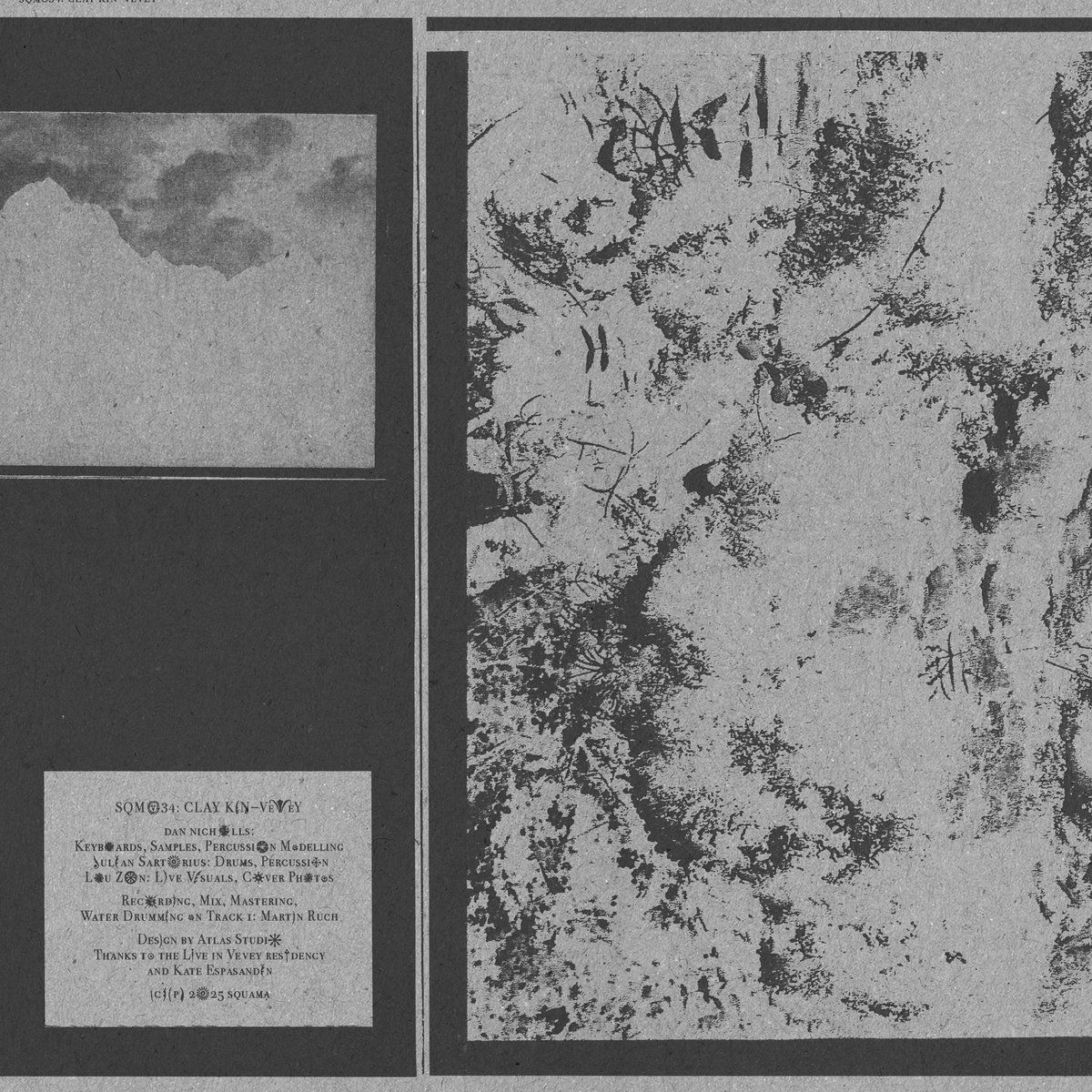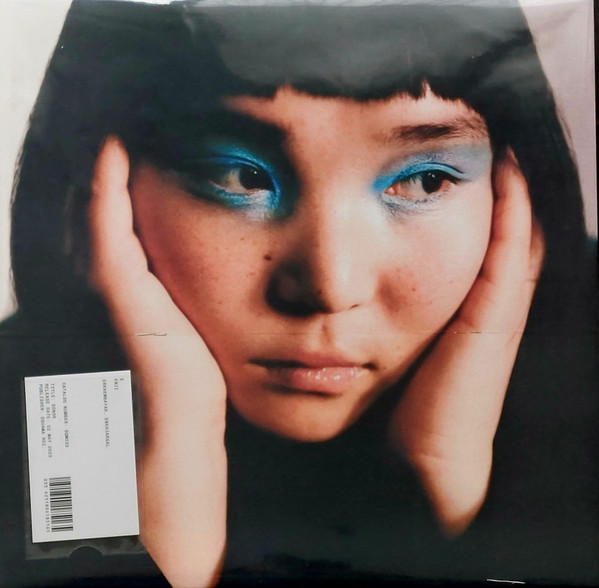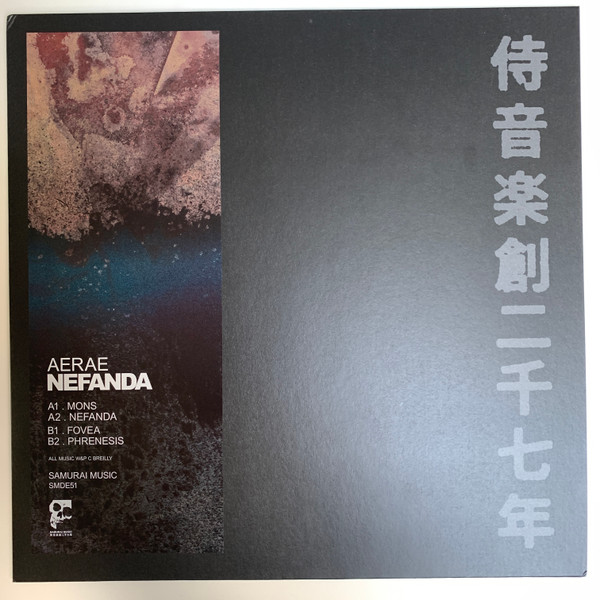By continuing your navigation on this website, you accept the use of cookies for statistical purposes.


Clay Kin
Vevey
As Clay Kin, Swiss percussionist Julian Sartorius and UK electronic artist Dan Nicholls have made an album which can’t ever be recreated.
They had never planned to make an album yet through pure improvisation and spontaneity, Clay Kin have crafted Vevey. An album of seven tracks, distilled from over seven hours of improvised percussion and electronics. Recorded mostly outdoors––on pedalo boats, up mountains and deep in forests near the namesake Swiss town of Vevey, it is imbued with the soft fascination of birdsong, rushing water and chattering children.
Vevey resists genre. As musicians, Sartorius and Nicholls bridge the divide between acoustic and electronic soundscapes. Sartorius’ raw, organic percussion interweaves with Nicholls’ keyboard-triggered samples and harmonic landscapes, creating a dialogue where the lines between rhythm, melody and noise dissolve. Clay Kin identify their outfit as an audio-visual collective, with visual artist Lou Zon (Louise Boer) rounding out the group, creating videos to accompany both the recorded music and the live experience.
Clay Kin was born from a serendipitous meeting at the 12 Points Festival in San Sebastián, where their musical worlds, though seemingly disparate, resonated in unexpected ways. Sartorius is known for his intricate, tactile approach to percussion and his ability to create complex textures using only acoustic instruments. His previous work includes collaborations with Matthew Herbert, Valentina Magaletti, and Kae Tempest, as well as recording his own experimental albums and collections of field recordings.
Nicholls, whose electronic manipulation of sound explores the boundaries between human expression and processed soundscapes, has worked with the likes of Squarepusher, Tom Skinner and Goldie, alongside public installation and live performance which explores the connections between sound, movement and community.
Their first official collaboration happened by chance at King’s Place as part of the EFG London Jazz Festival. While both were invited to perform solo sets, during the event they decided to improvise together. Without rehearsal or a plan, they created something raw and unfiltered. A sonic conversation that felt both familiar and entirely new. That initial spark led to more performances and, eventually, the birth of Clay Kin.
The name Clay Kin carries a poetic weight. Inspired by Nicholls’s mother, a potter, the imagery of taking raw earth and transforming it into a vessel resonates deeply. Nicholls sees this as a metaphor for sound––music as a vessel, a carrier of experience, shaped by both the artists and the environment that surrounds them. The “kin” in Clay Kin speaks of the bond between Julian, Dan and Lou, which allows the kind of intimate playfulness and trust which forms the foundation of this music.
When the group was invited to participate in a residency for Live in Vevey, Switzerland, they saw it as an opportunity to fully embrace their shared love for experimentation. Booked to play shows in the evenings, Sartorius and Nicholls set out to record in various outdoor locations during the day, documented on film by Louise and recorded by Martin Ruch in surround sound
Over several days, the group embarked on a sonic pilgrimage, recording in diverse, unpredictable environments. The first day saw them drifting on a pedalo boat on a lake. The next day, they took Sartorius’ van into the mountains, setting up in a dense forest. With a 50 meter cable running from the van to Nicholls’ synths, along with Sartorius’ percussive explorations resonating through the trees, the forest became their studio. Ruch moved with the music, sometimes approaching from 20 or 30 metres away, giving the listener the visceral sensation of walking into the sound; a feeling captured at the start of the album’s opening track.
Improvisation lies at the heart of Clay Kin’s identity. Their music is not composed in a traditional sense; it emerges from deep listening and spontaneous interaction. As Sartorius describes it, “We didn’t even talk about what we were going to do. We just started to play.” Nicholls echoes this sentiment, emphasizing the trust and openness required to allow the music to unfold naturally. Their process is one of vulnerability, where control is relinquished and the environment is invited to become part of the music.
Each track is a product of this radical openness, where the environment becomes an active participant. The laughter of children on a nearby hiking trail, the rustling of leaves. These sounds are not interruptions but collaborators, shaping the music in real-time. Even the locations were chosen improvisationally, with no set plan beyond following instinct, the track titles on the album taking their names from the map coordinates where they were recorded.
This openness extends into their editing process, where no post-production was applied. They selected from hours of material to find a cohesive narrative, but the integrity of the original recordings remains intact.
Nicholls creates soundworlds using Ableton Live, a tool that allows adept processing and manipulation of sounds in real-time. Nicholls’ sonic palette draws from an endless reservoir of field recordings, from snippets captured on a phone to intricate layers of sound shaped through careful listening and experimentation. Sartorius, on the other hand, brings a deeply physical, tactile sensibility to the collaboration. Whether tapping on found objects, coaxing unorthodox sounds from his drum kit, or using two sticks to explore the sonic properties of the environment.
Perhaps the most profound aspect of Clay Kin’s work is its ephemeral nature. Each track on Vevey is not just an improvised performance, but a moment in time, impossible to replicate. Even if Sartorius and Nicholls returned to the exact same locations with the same instruments, the music would be different. The birdsong, the wind, the voices of passersby––not to mention the music––all of these elements are unrepeatable.
Vevey is more than just a collection of improvised performances, it’s an exploration of what it means to make music in dialogue with the natural world. By stepping outside the controlled environments of studios and concert halls, Sartorius and Nicholls have created something raw, vulnerable and deeply human. Their music is a vessel, carrying the essence of place, time and collaboration.
On Clay Kin’s Vevey, the lines between musician and environment blur, and the result is something wholly unique, a soundscape where earth and machine, rhythm and noise, tradition and experimentation converge.
Mitwirkende
wird veröffentlicht am 1. August 2025
Keyboards, Samples, Percussion Modelling: Dan Nicholls
Drums, Percussion: Julian Sartorius
Recording, Mix and Mastering, Water Drumming on Track 1 by Martin Ruch
Live Visuals by Lou Zon
Design by Atlas Studio
Thanks to the Live In Vevey Residency and Kate Espasandin






